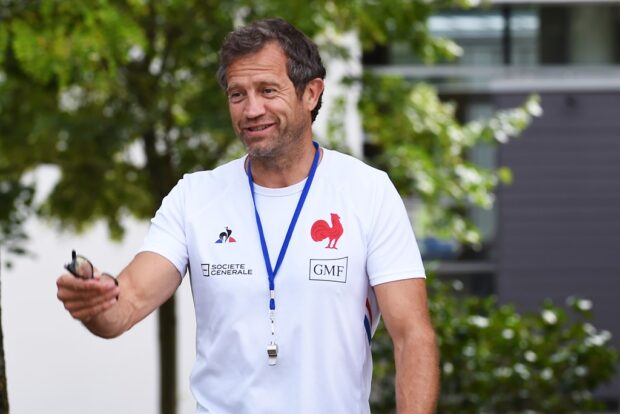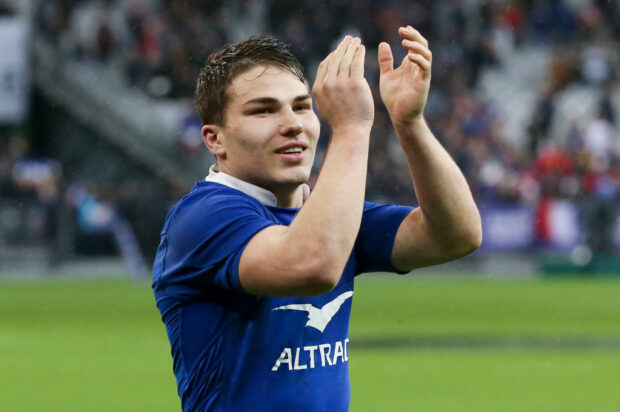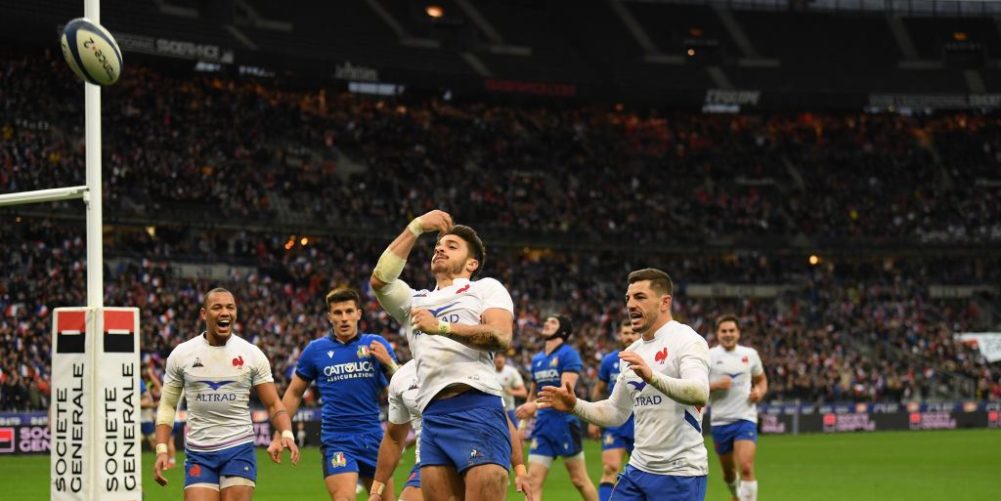Unlike his Six Nations’ counterparts who, on the whole, opted for continuity selections after the World Cup, new France coach Fabien Galthie dared.
He dared make a near-complete break with the past, jettisoning any player in their 30s – except for flanker-cum-lock Bernard Le Roux – from his first official selection as France coach.
Thirty-something World Cup squad members Yoann Huget, Maxime Medard, Rabah Slimani, Wenceslas Lauret, Maxime Machenaud, Sofiane Guitoune and Camille Lopez were deemed surplus to requirements at the very start of the new World Cup cycle.
France had already lost Guilhem Guirado, Wesley Fofana, Louis Picamoles and Sebastien Vahaamahina to post-World Cup retirements.
Galthie’s first 42-player Six Nations squad contained 19 players with no senior international experience. Just Le Roux, Gael Fickou, Jefferson Poirot and Baptiste Serin had more than 30 caps, with Uini Atonio’s late call-up as injury cover taking the 30-cap club to five.
The 25-year-old Fickou is on his own with 50 senior internationals under his belt.
No other Six Nations’ coach cleaned house so comprehensively. No coach had to. Not even Galthie, to be honest.
There’s a lot of rugby between now and the next World Cup. It’s logical to feather new players into an existing unit, and build slowly – evolution rather than revolution.
It’s why Ireland’s Andy Farrell has stuck with ageing half-back duo Conor Murray and Johnny Sexton. It’s why England’s Eddie Jones decided that his hunt for a new-model nine can wait a while. What you see now is not what you’ll get at France 2023 from Ireland, England, Scotland or Wales.
Few would have criticised Galthie for keeping a few older heads onboard, at least initially. But, he has immediately gone all-in. Revolution, rather than evolution.
But there’s a very real sense this – finally – is the beginning of something new. Something special. Something, worryingly for opponents, long-term.
Seven of Galthie’s original 42 came from France’s U20 World Championship-winning sides of the past two years: Demba Bamba, Louis
Carbonel, Kilian Geraci, Jean-Baptiste Gros, Romain Ntamack, Arthur Vincent and Cameron Woki. Another U20 star, blockbusting No.8 Jordan Joseph, 19, is looking for his third age-grade world crown this year and should come into the senior squad in the next couple of years.

None of this has happened in a vacuum. Galthie’s French Revolution could not have happened without serious investment in homegrown talent that puts the lie to a common view that French rugby is a lucrative pension pot for international hasbeens, could-have-beens and never-weres.
His players’ lack of years does not equal a lack of experience. Flanker Woki, 21, has played more than 50 times for Bordeaux. Ntamack, also 21, has nearly 50 outings for Toulouse, as well as 12 senior men’s and 15 U20 international caps. Antoine Dupont, a relative veteran at 23, is nudging 100 Top 14 and European appearances.
Julien Marchand, 24, can count his international appearances on one hand with fingers to spare – but has played 114 games for Toulouse. Meanwhile, the hooker long-considered heir apparent to Guirado’s crown, Camille Chat, with 26 internationals and 100 games for Racing 92 to his name, turned 24 in December.
The inconvenient truth for the cliche throwers is this: French rugby is increasingly French. It just needed a coherent and competent coaching set-up to bring the talent out.
Typically complicated JIFF regulations insist every matchday 23 should contain at least 16 ‘homegrown’ players and that top-flight clubs, with some leeway for newly promoted sides, can have no more than 15 overseas imports in their overall squad. They are policed, at the risk of a damaging points deduction.
Clubs, on the whole, are comfortably beating those minimum requirements as they realise the potential of boasting about their ‘Made in France’ credentials.
Since 2013, when the regulations came into force, with a lower base level, the average number of JIFF players in Top 14 squads has risen from a shade over 13 to well over 17.
Today, of the 322 who play Top 14 rugby on any given weekend, some 240 or more are JIFF. Most of those are France qualified.
As a result, Les Bleus have gone from Lopez or bust at 10 – a long-term weak spot for France – to a genuine contest for the shirt between World Rugby breakthrough player of the year Ntamack, or Mathieu Jalibert, Carbonel or Anthony Belleau – with Stade Francais‘ Joris Segonds waiting in the wings.

Dupont and Serin have scrum-half competition from Lyon’s Baptiste Couilloud, while La Rochelle‘s Thomas Berjon and Stade’s Arthur Coville are already being mentioned in dispatches.
Behind spiral-kick king Anthony Bouthier or Thomas Ramos at fullback, Toulon‘s Gervais Cordin is making a name for himself – and has already featured in Galthie’s thinking, while Stade’s Kylan Hamdaoui’s frustrating run of injuries are surely delaying what would be a deserved first international cap.
The presence of Arthur Vincent and Pierre-Louis Barassi mean losing on-fire centre Virimi Vakatawa to injury is not the disaster it could have been. And expect to hear the names of young midfielders Tani Vili and Guillaume Galletier before long.
Lose Teddy Thomas, Damian Penaud, Alivereti Raka, Vincent Rattez or Arthur Retiere out wide? Vincent Pinto and Jules Favre have the pace and skill to embarrass defenders.
There’s a similar production line-length list in the forwards, too. Behind Ollivon, Alldritt and Cros in the back row, for example, there’s Woki, Sekou Macalou, Boris Palu, and Arthur Iturria. Behind them, there’s Joseph, Thibault and Clement Lanen of Clermont, France’s answer to the Curry twins, Bayonne’s Filimo Taofifenua and La Rochelle’s Paul Boudehent – a player Glasgow fans should remember well.
Behind all of those, more players are coming through the age-grade ranks to feed both national and club rugby for years and decades to come.
Suddenly Galthie’s Revolution starts to make sense. It’s the line in the sand that says French rugby restarts here.
JAMES HARRINGTON























